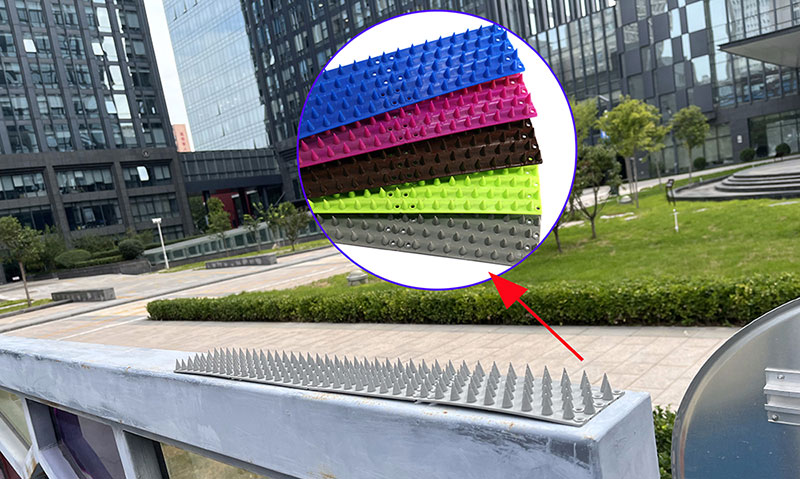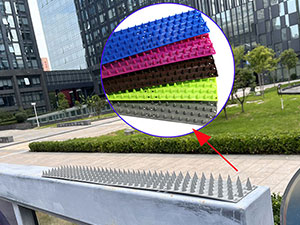Cat Repellent Spikes
A common solution that people use to keep cats away from other areas of their garden or yard is cat spikes. Some may line the top of their fence with cat spikes to prevent cats from crawling into their yard entirely. Others may place cat spikes on the ground to prevent digging or in more specific areas where they don’t want the roaming claws to enter, such as under bird feeders, in flower beds, or around vegetables. Some cat owners may even place them in areas such as indoor countertops and furniture to show their cats that these areas should be avoided.
Cat spikes are designed to create a physical barrier that makes it uncomfortable for cats to step on. In theory, this should prevent them from going over spikes and into areas they shouldn’t.
While the term “cat spikes” may conjure up images of sharp metal points that can injure cats or other animals, they’re actually usually made of plastic or rubber. There are two main types of cat spikes:
1. “Tapered” spikes: This option features a strip of material with a series of plastic or rubber tapered spikes. The tips of the spikes are designed to be blunt so they won’t harm the cat but will make the surface uncomfortable and difficult to walk on. Each spike can be fastened to a variety of surfaces, from concrete to metal and wood, and can be easily cut to specific lengths, making it very versatile.

2. “Scat mats”: These are similar to utilitarian tapered spikes, but with a slightly different design. Scat mats are larger and made from a series of small plastic spikes (think: the underside of a plastic table and chair pad, zoom in). Scat mats are able to cover larger spaces both outdoors and indoors. For example, place a scat mat in the garden where the nearby cat likes to use the bathroom. The mat covers the ground so cats can’t dig or do business comfortably. Scat mats can also be lined up on countertops or tables to keep cats from jumping up for comfort. Plastic spikes feel weird under cats’ feet and should prevent them from exploring these areas considered “off limits”.

Reliability and Effectiveness of Cat Spikes
Based on our analysis of thousands of product reviews from various retailers, the consensus is that most cat spike products are effective on approximately 50-60% of cats. The most frequently cited issue is that the spikes do not disturb or deter the cat. As you probably know for sure, all cats are different and have unique personalities. For just about every cat who can’t stand the feeling of spikes under their feet and will avoid cat-protected areas entirely, there’s another cat that doesn’t walk on cat spikes or fecal pads at all – or maybe they’re just too stubborn to be discouraged! For these cats, the efficiency drops to essentially zero. Interestingly, many cats who initially avoid cat spikes will slowly get used to the spikes and will no longer be bothered by them.



